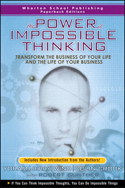Keeping Your Models Relevant
New Maps
The strategies described in this chapter can help you find new ways of looking at the world, but you still are challenged to know when to look seriously for new models. It took a lot of energy to set out on the journey of discovery that Charles Darwin made in the HMS Beagle. It took great time and energy for a company like IBM to put structures and business models in place that allowed it to embrace open software. You can sometimes recognize the need for this type of change by paying attention to the parts of the world that no longer fit your mental models and that help you see when your models no longer work. If you think about optical illusions, before you make the shift from one view to another, you usually focus on specific details of the picture—which then lead to a shift in view.
New models very often emerge from a crisis. Yet if you keep an open mind, become more aware of the limitations of your existing models and actively set aside time to explore other models, you can recognize the need sooner and respond more quickly and effectively in seeing a new way of seeing. If you keep a set of different models at hand, you can try out different ones in solving problems, experimenting with new approaches to see if they might work better than your existing ones.
- Where can you look to find new models and fresh ways of viewing the world?
- How can you step out of your routine to engage in journeys of discovery (even via a brief trip to an art museum or a scientific lecture)?
- Who are the radicals or unheard voices in your organization and outside, and how can you start paying attention to them? What new models do their insights suggest?
- What can you learn from listening to young people in your family or your organization?
- How can you keep your mind open so that, like Darwin , you can use your experiences to come up with a different way of viewing the world?
By zooming in and out, you can gain a better understanding of the context and the specific information you need in order to act. You can see the piece of cheese and recognize that it is sitting in the middle of a trap. Both perspectives are needed to make effective decisions, particularly in a world of relentless information flows and great uncertainty and complexity.
Cultivate a process of zooming in and out as you look at any given challenge. Learn to recognize and be aware of when your vision is pulled back and focused so you can consciously change your focal point. Don’t be afraid to jump out of the stream when necessary to take a needed step back, or to plunge into a particular detail to get the specific knowledge you need in order to act. Think about ways to establish a team for a “pair programming” approach, so you can engage in zooming in and zooming out simultaneously. By means of this process, you can see where you are going and the path to get there.
- In what areas of your life, personal or professional, are you overwhelmed with information? How can you zoom out to look at the broader context?
- In what areas of your life are you limited by too broad a perspective? How can you zoom in to examine the details more closely?
- How can you create routines and structures in your daily life and in your organization to encourage this process of zooming in and zooming out? Can you designate some parts of the organization to zoom in and others to take the big-picture role of navigation?
- Pay attention to your own feelings. When are you suffering indigestion from too much data? When are you feeling hungry because you don’t have enough information? What do you need to do to respond to these feelings?
- What natural “experiments” are going on around you, and how can you create hypotheses that will allow you to learn from them?
- Think of a recent failure. How can you conduct a post-mortem to learn from this experience?
- How can you design new experiments to test the limits of your model or gain new insights that might suggest a new mental model?
- How do you capture the learning from these experiments and share it with others?
- When your hypotheses are confirmed or disproved by your experiments, how do you build on this knowledge to generate the next set of hypotheses and experiments?
